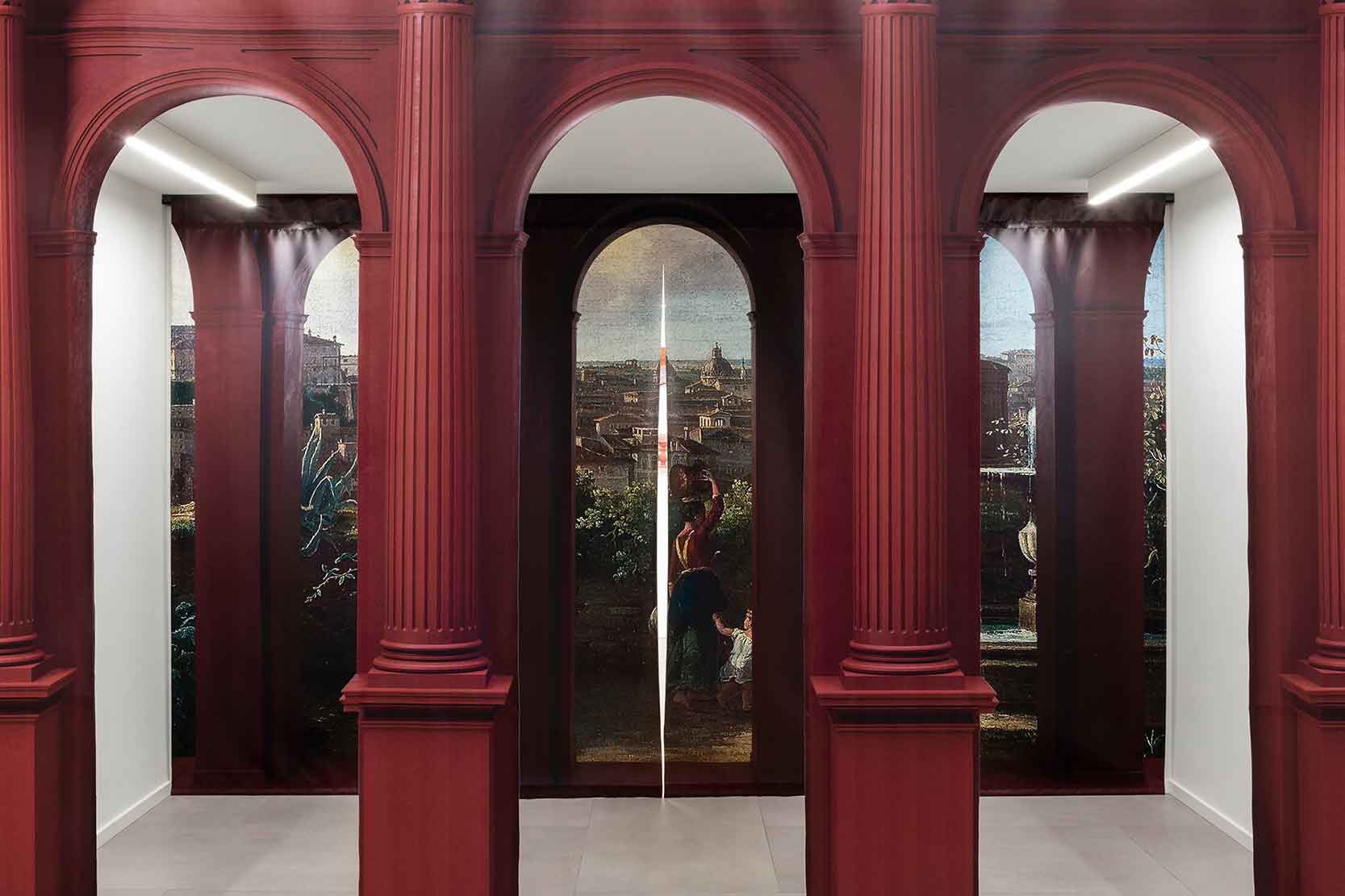Interview by Simona Serban
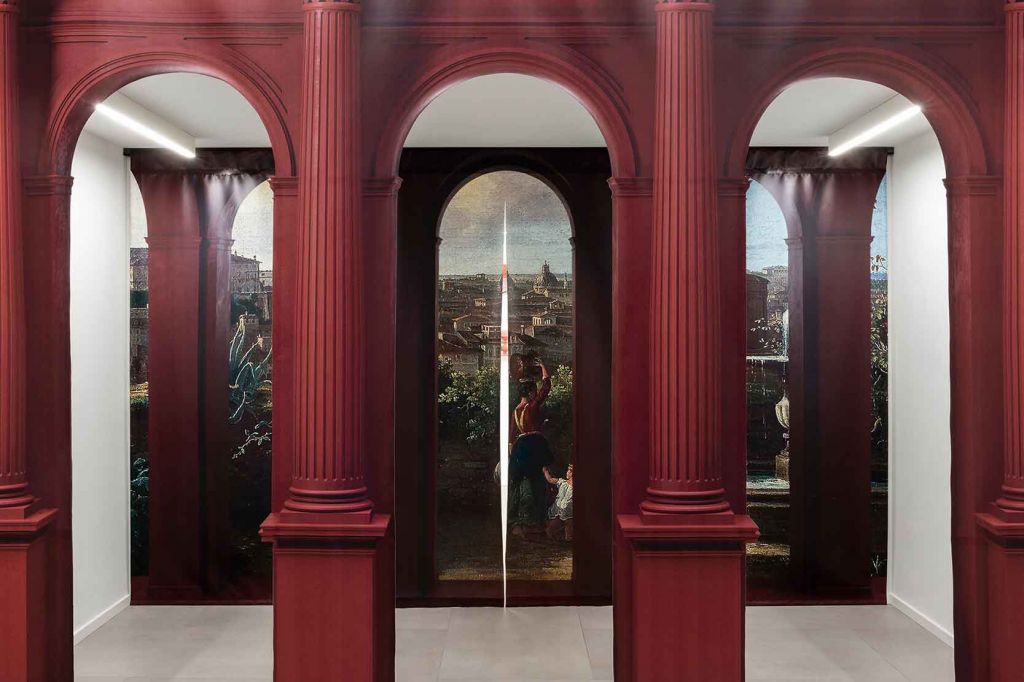
ROBOCOOP – RomaBologna Cooperation – an art duo project initiated in 2012 by two photographers and architects, has research and experimentation as core beliefs for true change and creation in arts and architecture through urban art. One of the most important aspects of being able to maintain your creativity is the environment you choose to work in.
ROBOCOOP, found a unique solution to erase any non-creative aspects in their design process. With a background in architecture, the duo, who lives between Rome and London, tackle mostly the urban challenges of the cities, with the aim in mind to document through comparisons of the contemporary and past architecture, using different tools – as collages, installations, photographs, engravings, drawings.
What is most compelling about ROBOCOOP, however, is the type of projects they focus their attention on, given their surroundings change more frequently, being able to have a provocative and reflexive approach to the design process and, thus, the results being more striking. They focus on creating visions based on drawings, images and visuals that generate emotions, engage communication and change within the pedestrians, focusing on playing on the conceptual design not aimed at physical construction.
Their unique approach to improving the contemporary urban challenges, with respect and fascination for the tradition and the rich past of cities, is visible in all of their projects. Their latest project, Quadrature, opens onto an imaginary landscape of Prati and the Vatican City, giving life to a completely illusory but plausible and effective depth. The name and the theme of the exhibition itself are inspired by Quadraturis – a pictorial genre born in the second half of the 16th century, which consisted of the creation of quadratures – architectures painted on walls and ceilings within a rigorous perspective and illusionistic framework.
It’s through these types of projects that ROBOCOOP shares their vision of the urban contemporary challenges while focusing on conceptual artistic change, showcasing its best assets by channelling their creativity through their unique design approach. Social change is influenced by urban challenges and social, environmental, ecological, historical, and taboo concepts that, throughout the years, have shaped the society we now live in.
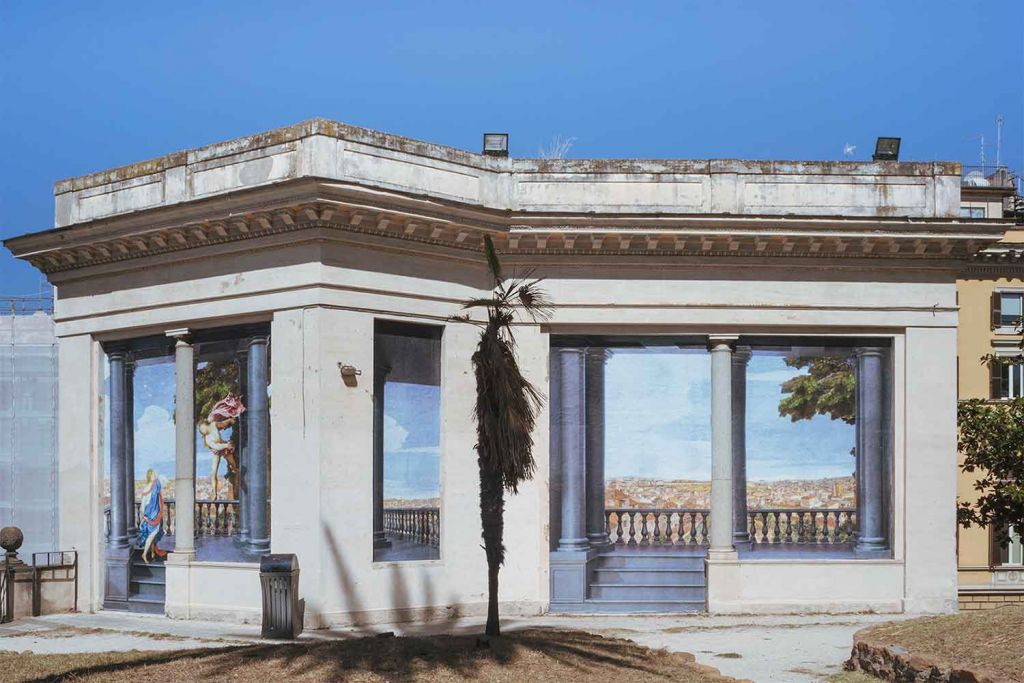
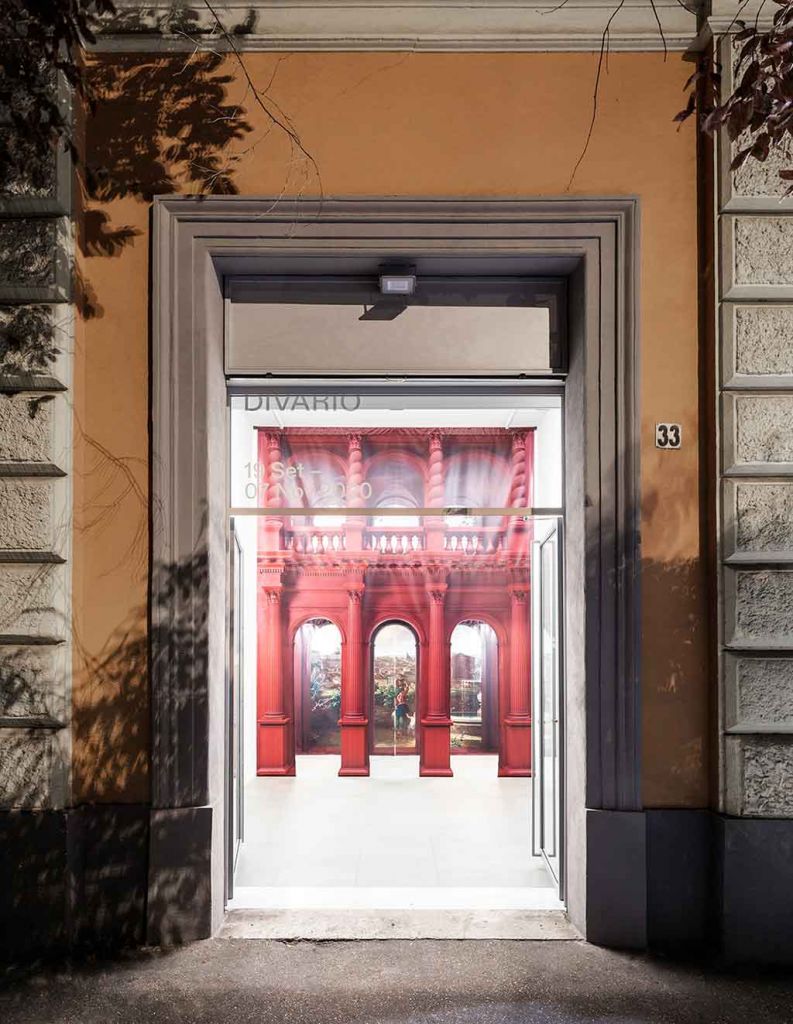
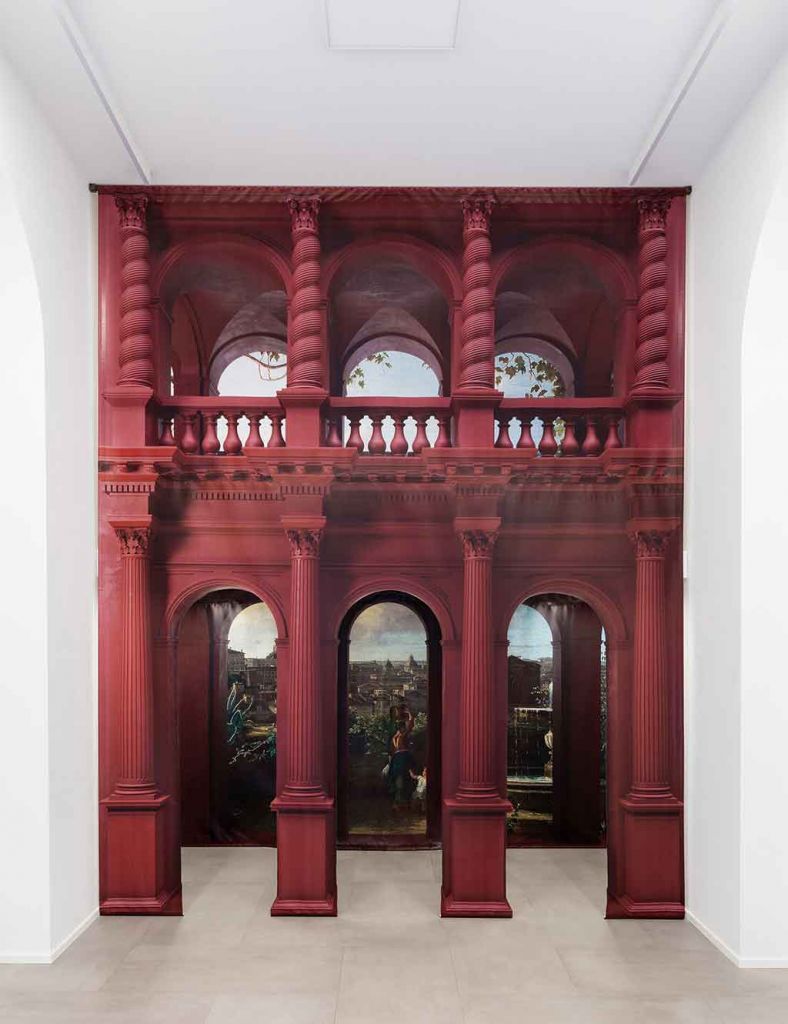
For our audience that is not familiar with your work, how did studio ROBOCOOP come to be?
We are both architects specialising in the production of architectural images. We met at the Faculty of Architecture, where we started ROBOCOOP. Since then, we have considered this project as our experimental practice, where our art skills come together into a deep, unique common point of view.
Both fascinated by the classic and historical culture related to our traditions, we compare our visual references to the past and experiment with different tools.
You have an interesting and unique approach to your work environment, seeing as you maintain travelling between Rome and London. How is this reflected in your practice?
Our multicity approach is something we consider with attention. We look with respect and fascination with the tradition and rich past of a city like Rome, but London gives us a contemporary point of view on arts and architecture. Exhibitions and installations in specific contexts are the crucial moments in which we attentively reflect on what we are practically doing and how we are relating to the context. These moments are such a great time for us: we talk, create, discuss and produce unique masterpieces.
Do you feel you are more creative like this, seeing as you can’t become bored with your surroundings as you experiment with different spaces, maybe discovering places in each city you haven’t visited before?
Yes, we do. Considering what we said before. Our way of travelling between Italy and the UK permits us to have a fresh approach to different spaces as well as different projects to develop in both of these countries. Even if Rome and London are two completely different cities, we think they both strongly influence our work.
What is the first thing you notice in a place, and how would you describe the perfect city?
We have a dynamic vision of the city and of the architecture that shapes it. After all, we see the city as a sequence of images layered in space and time. We like the idea of being able to draw from this archive of urban fragments and slides, to be able to “qualify”, to choose forms and to be able to reassemble them in a new design that is a space and new architecture, even if only illusory.
Our way of observing the city has been strongly influenced by the study of the artistic practices of landscape painting, and in particular of the “capriccio”, understood as the extraction from the history of elements of the urban context, more or less architectural, and their re-proposal, through montage in a new semantic context.
Regarding the second part of the question, there is no way for us to describe a perfect city as it is a complex organism in continuous evolution: only its parts, abstracted from the context, could be perfect and accomplished. Our intention focuses, more generally, on the fragments of the spatial sequence of the city, whether completed or not.
In your projects, you focus on the city’s problems and spaces that have been forgotten, using expressive concepts and art installations based on thorough research. How do you translate what you see in forms that would be able to invite people to resonate with the messages? Is it challenging for you to create a bridge between such strong elements?
What we try to do is culturally summarise the architectural tradition of the places where we operate: our in-depth and careful research of historical sources and precedents does not always correspond to an equally controlled translation of the project output. Ignazio Gardella once said that the culture serves the architect only when it is forgotten.
Like when you speak or write and use grammar and syntax rules that you have forgotten. In a certain sense, our ability to translate what we see comes from rules that we have learned during our studies and that we are learning in professional practice, that we have forgotten and that we will forget, but which together form our culture.
These rules, continuing the grammatical metaphor, make our language, and consequently our speech, more fluid so that the message can be more easily understood by those who are interested in our project.
Why do you believe empty spaces, forgotten architecture or unused places deserve people’s attention? What drives your passion for your craft?
When we usually experience the urban spaces in a new city, we are always fascinated by the unique and untraced areas in the metropolis. This doesn’t mean that these places are located so far from the city center or perhaps at the edges of the metropolis: sometimes they are located in strategic but unexpected points of the city.
Rome is full of these crucial spaces: ‘Loggia Aldobrandini’ – one of our latest projects in collaboration with Roma Capitale, Assessorato alla Crescita culturale – Sovrintendenza Capitolina ai Beni Culturali – starts from exploring this kind of space. On that occasion, we made a temporary installation in a beautiful but unknown area in the city center, activating a sense of identity again in the neighbourhood for the space itself through our artwork. That was more important for us than the artwork itself!
Generally speaking, our images serve to evoke and summarise cultural atmospheres, and no place is excluded from this type of phenomenon. The unused places represent opportunities to suggest new imaginary and possible spatial solutions.
What do you aim to achieve with ‘Quadrature’, one of your latest projects at Divario, and what is unique to the project compared to your other creations?
In ‘Quadrature’, our project for the exhibition at Divario, the installation starts again from the street context and the architectural gallery space related to that. Divario itself is a white box but with a strong identity: in fact, the architectural restoration of this classical Roman ground floor space presents an iconic double-height area.
Quoting some masterpieces’ references from the Italian quadraturismo art scenarios, the idea was to bring a superstructure inside of this space to set the exhibition areas, creating a space within a space. The artworks themselves are also quadrature – which means frames – of this imaginary scenario. We hope to have reached our envisaged purpose!
What is your chief enemy of creativity?
Bureaucracy!
You couldn’t live without…
… our print lab.

